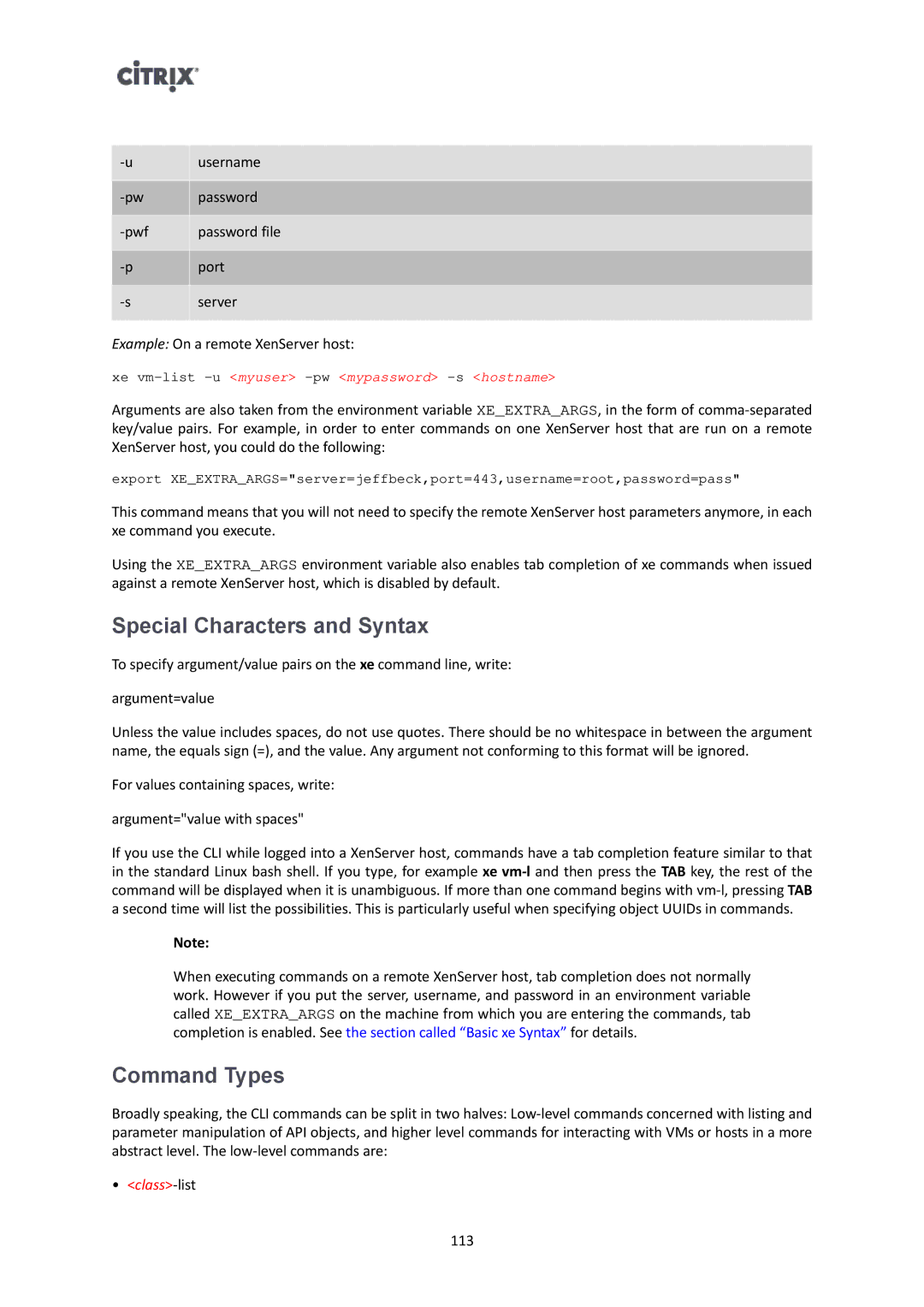username | |
|
|
password | |
|
|
password file | |
|
|
port | |
|
|
server | |
|
|
Example: On a remote XenServer host:
xe
Arguments are also taken from the environment variable XE_EXTRA_ARGS, in the form of
export XE_EXTRA_ARGS="server=jeffbeck,port=443,username=root,password=pass"
This command means that you will not need to specify the remote XenServer host parameters anymore, in each xe command you execute.
Using the XE_EXTRA_ARGS environment variable also enables tab completion of xe commands when issued against a remote XenServer host, which is disabled by default.
Special Characters and Syntax
To specify argument/value pairs on the xe command line, write:
argument=value
Unless the value includes spaces, do not use quotes. There should be no whitespace in between the argument name, the equals sign (=), and the value. Any argument not conforming to this format will be ignored.
For values containing spaces, write:
argument="value with spaces"
If you use the CLI while logged into a XenServer host, commands have a tab completion feature similar to that in the standard Linux bash shell. If you type, for example xe
Note:
When executing commands on a remote XenServer host, tab completion does not normally work. However if you put the server, username, and password in an environment variable called XE_EXTRA_ARGS on the machine from which you are entering the commands, tab completion is enabled. See the section called “Basic xe Syntax” for details.
Command Types
Broadly speaking, the CLI commands can be split in two halves:
•<class>-list
113
